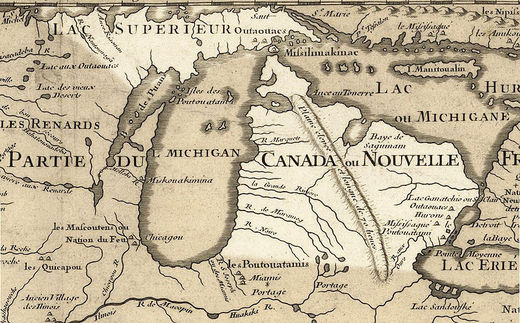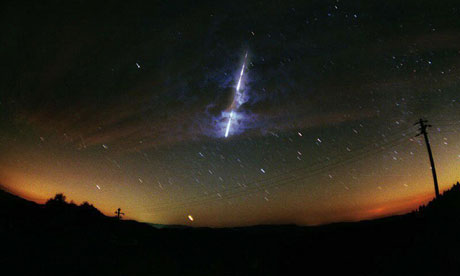
© Wikipedia.As reported recently in New Jersey, four fireballs crossed Michigan skies on October 1, 2011, and the witness was able to capture all four on video.
A Michigan couple report "four consecutive fireballs" crossed the sky "traveling straight at a steady pace," according to October 2, 2011, testimony from the Mutual UFO Network (
MUFON) witness reporting database.
The couple was driving home from dinner when they noticed the first "orange fireball rising up from the horizon."
"It was travelling almost perfectly from north to south," the witness stated. "All you could really see was the v-shaped plume of fire behind it."
The witness described the size of the object.and its path.
"If you extended your arm fully out in front of you, the plume appeared the size of your pinky fingernail. It was travelling straight, at a steady pace."
But then more fireballs were seen.
"What was really odd was that after it traversed the sky and went out of site, about 20 seconds later, another one appeared from the same origin, travelling the exact same path-pace as the first one. Even stranger, this happened a total of four times."



Comment: The same video in slow-motion from Space.com: